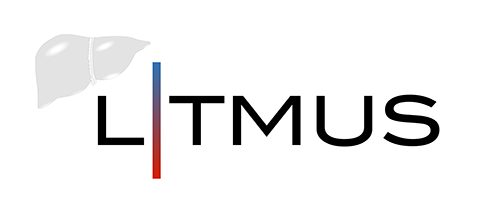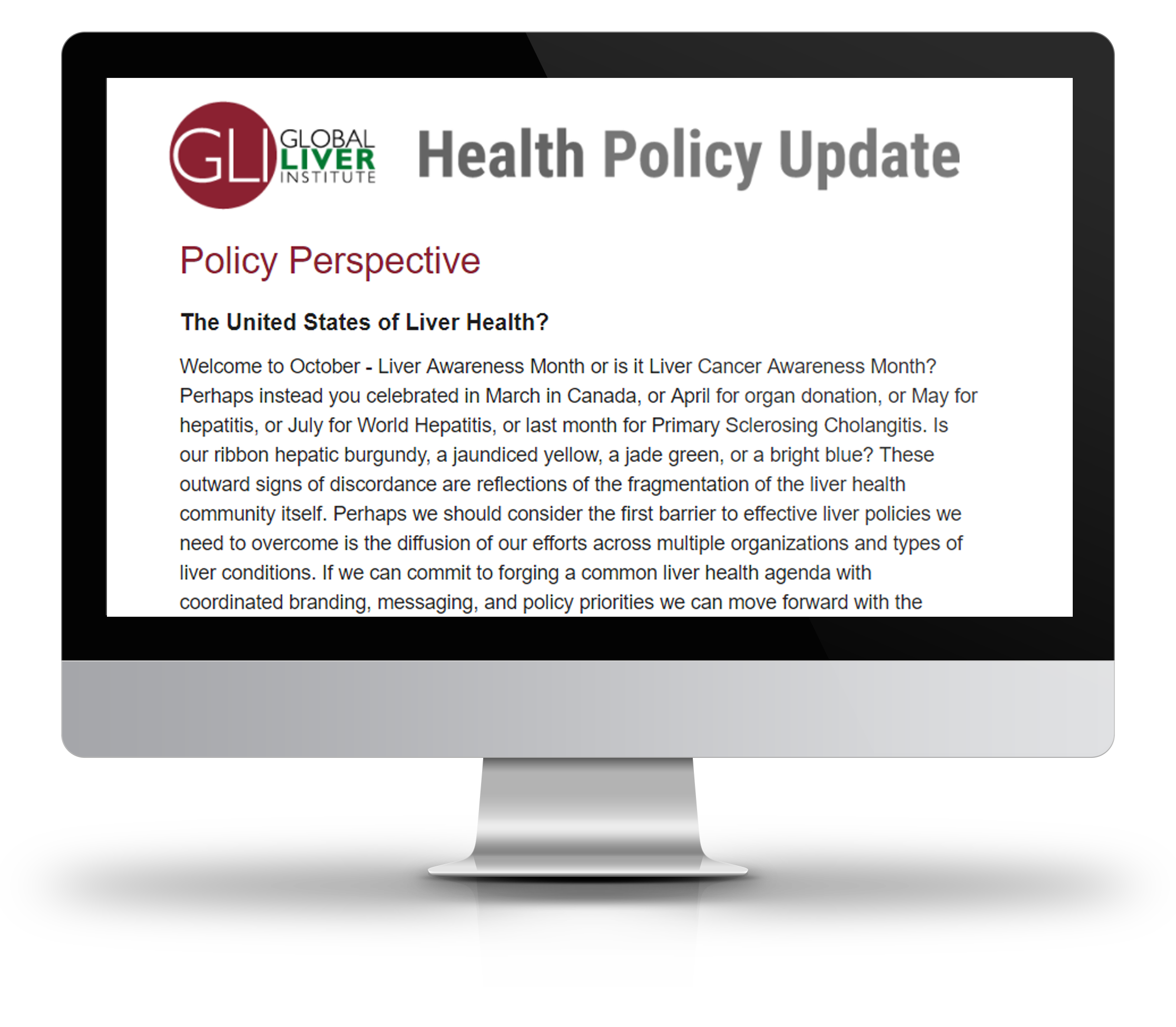
As recognition of fatty liver disease and non-alcoholic steatohepatitis (NASH) as a true global health crisis rises the need to collect, curate, and share relevant information in a timely fashion grows as well. The GLI NASH News is intended to meet that need and facilitate collaboration across the emerging NASH Community on a monthly basis.
We appreciate your feedback and content contributions. Please contact nash@globalliver.org
GLOBAL LIVER INSTITUTE
GLI Perspective
This spring has been a whirlwind month of significant activities in the NASH field in multiple countries and leveraging the expertise of an increasing number of stakeholders and disciplines. After being fully immersed in the European liver meeting (EASL) in Paris, France and leading clinical stream for the NASH Summit in Boston, MA, USA and countless productive conversations with clinicians, researchers, industry, and patients, there are three thoughts I’d like to bring to the forefront:
- The value of collaboration over duplication: As more and more participants new to liver enter the field it is important that the several key initiatives that have been developed to strategically address key aspects of building an effective NASH movement – the Liver Forum (clinical development) , TARGET-NASH (observational study), NASH Education Program (tools for public, patient, and physician awareness), and the GLI NASH Council (patient, physician, corporate and public health stakeholder engagement and advocacy) – be supported rather than duplicated.
- The connection of NASH to other disease states will be transformative: The number of companies with expertise in diabetes, cardiovascular diseases and obesity management further entrenches fatty liver disease and NASH as the hepatic manifestation of metabolic syndrome, creates allies in active and influential physician, patient, and policy-maker communities, and has the potential to engage people in thinking about liver health as a personal and public health priority like never before.
- While the science for the both fatty liver and NASH diagnostics and potential therapies is still in the early stages of their evolution, we have a responsibility to provide more clear, actionable information for steps physicians, diagnosed patients, and those at risk can do right now, knowing that it will be an iterative process that updates with new information.
NASH COUNCIL

New Members Spotlight!
- Kristen Binaso – Boehringer Ingelheim Pharmaceuticals, Inc.
- Leo Seman, MD, PhD – Boehringer Ingelheim Pharmaceuticals, Inc.
- Genfit
- Tiago Nunes, MD, PhD – Nestle Health Science
- Bill O’Dell – Clinical Care Options
- Michelle Long – Boston Medical Center Fatty Liver Clinic

NASH Council Membership list
Want to be a member? Membership Application Form
Members have the benefit of accessing the secure NASH Council portal with workgroup meeting minutes, other members’ contact information, and will have the opportunity to participate in our full council meeting in June.
Workgroup Call to Action:
In the weeks leading up to our June 1st NASH Council Meeting we are requesting the following:
- Nominations for experts in the field to present during an upcoming GLI NASH Council meeting;
- Interested persons willing to speak at conferences on behalf of GLI’s NASH Council;
- Recommendations for new members for GLI’s NASH Council;
- Original research or other NASH News Submissions
To RSVP for a workgroup, receive the workgroup conference number, receive access to the NASH Council Portal, or for more information please email NASH@globalliver.org.
Fatty Liver Foundation
The Fatty Liver Foundation will be working with Intercept to pilot a screening project to test for comorbid but undiagnosed Fibrotic Liver Disease. Check out their recent poster of their study:

Industry
TARGET PharmaSolutions, Inc.

TARGET PharmaSolutions is a data solutions company that provides pharmaceutical and biotechnology partners a more efficient way to generate data in the real-world setting. TARGET PharmaSolutions has announced it’s long-term strategic alliance for TARGET-NASH which originally launched August 2016. TARGET-NASH is a longitudinal observational study that evaluates adults and pediatric patients with NAFLD or NASH. The academic steering committee is chaired by Dr. Arun Sanyal, Dr. Ken Cusi, and Dr. Brent Tetri.
Learn more about Target-NASH at one of their upcoming poster sessions!

Prometheus FIBROSpect

PrometheusⓇ FIBROSpectⓇ NASH test helps detect, stage, and monitor liver fibrosis in NASH patients. It is conducted as a simple blood test that is noninvasive and nonfasting. The test provides accurate, quantitative fibrosis score to help physicians determine risk and monitor patients based on 3 clinically relevant biomarkers. Those biomarkers include: (1) Tissue inhibitor of metalloproteinase-1, (2) Hyaluronic acid, and (3) alpha-2-macroglobulin.

This test may reduce the need for biopsy, which is considered invasive testing. Early detection, staging of, and monitoring of liver diseases is beneficial to slow the progression of this silent disease. Continue to find out more information as this new proprietary disease-specific algorithm develops here.
Regeneron

On March 21, 2018, Regeneron in collaboration with Alnylam Pharmaceuticals announced progress in developing new treatments for NASH. Their discoveries address the HSD17B13 gene that is associated with reduced risk of NASH and other chronic liver diseases. Through the use of RNA interference therapeutics, Alnylam’s therapeutic goal is to target and silence any gene involved in the potential pathways that cause human disease. View the full press release on their new discovery and there other future projects.
Regulatory
Canon Medical

On March 27, 2018, Canon Medical announced that it received FDA approval for their Liver Analysis Suite – Aplio i800 – ultrasound system. The ultrasound system features tools that allow Shear Wave Dispersion and Attenuation Imaging, which are necessary to assess steatosis, NAFLD and/or NASH. There has been many challenges over the years for radiologists who have not been able to fully penetrate the depth of the liver (liver inflammation, fluid accumulation, patient’s BMI) with a standard ultrasound machine. The Aplio i800 alleviates this challenge by giving clinicians and patients a visual display in addition to quantitative information.
Clinical Trials
- 156 clinical trials globally recruiting for NAFLD
- 53 clinical trials globally recruiting for NASH
Research
Litmus

The Innovative Medicine Initiative – ‘Liver Investigation: Testing Marker Utility in Steatohepatitis’ (LITMUS) has now started. This work is being spearheaded by Newcastle University in the UK and RTI-HS in the US. The goal of the project is to develop and validate highly accurate blood tests and imaging techniques that will enable doctors and researchers to rapidly and easily diagnose the severity of patients’ disease and monitor changes in patients’ livers. The tests additionally will make it possible to predict which NAFLD patients are at greatest risk of developing NASH.
The work conducted under the NASH task force will be aligned with the PRO-focussed work conducted as part of LITMUS. NASH-CHECK will focus on patients in fibrosis stages F1 to F3 with an additional focus of developing a module for cirrhotic NASH patients.
For more information about this project, please view one of their presentations here.
Follow this new study on Twitter: @LITMUS_IMI
Dietary Recommendations
In the absence of pharmacotherapies, clinical guidelines from the American Society for Nutrition suggest an improvement in lifestyle and diet as a means of prevention and management for NAFLD in adults. The Practice-Based Evidence in Nutrition classification system was used as a guideline to identify these Dietary Guidelines. These guidelines are suggested as current research shows that improving diet may reduce the incidence and progression of NAFLD and associated risk factors. Table 2 on page 34 specifies the proposed mechanisms for nutrients, foods and dietary patterns in NAFLD.
Pediatric NAFLD
Typically, NAFLD and NASH are associated with adult patients. However, pediatric NAFLD is also something that people should be aware of. NAFLD is now considered the most common cause of chronic liver disease in children and adolescents in the United States. As there is a constant rise in obesity (over 20% of adolescents) and type 2 diabetes in children, studies suggest that 50% of those children also have NAFLD. Pediatric NAFLD is most commonly seen in hispanic males aged 15 to 18. There are specific demographic and clinical factors that associate with the progression of NAFLD to NASH in pediatrics similar to those in adults. A recent study was conducted to assess these risk factor progressions of and treatment options for NAFLD in children.
Web-based Lifestyle Intervention
Lifestyle modification, specifically weight loss, is continuously being researched as a therapy for NAFLD. However, there are challenges on how to create intervention programs that effectively achieve this.
An Italian study under the direction of Professor Giulio Marchesini, explored the effectiveness of lifestyle intervention on patients who have NAFLD. 716 patients were included. The patients were split into two groups. Group A participated in a 5-week intensive group-based lifestyle modification program and group B participated in a web-based intervention. Each group was followed and evaluated at the 6-, 12-, and 24- month mark, with the goal of patients to achieve 10% weight loss.
The study results show that both groups had shown weight loss (Group A: 15%, Group B: 12%). Although, web-based interventions are proven to have potential, the real challenge for patients is sustaining the weight loss for longer periods of time.
For Your Calendar
May 18-19: NASH Biomarkers Workshop 2018. Washington, DC.
May 25-26: World Liver Conference. New York, New York.
June 1: Full Body NASH Council Meeting. Washington, DC.
June 12: International NASH Information Day
Further Reading

Diabetes Medicine reduces liver fat in NAFLD
Empagligfozin reduces liver fat in patients with type 2 diabetes, NAFLD
Study: Canagliflozin protects against NASH
